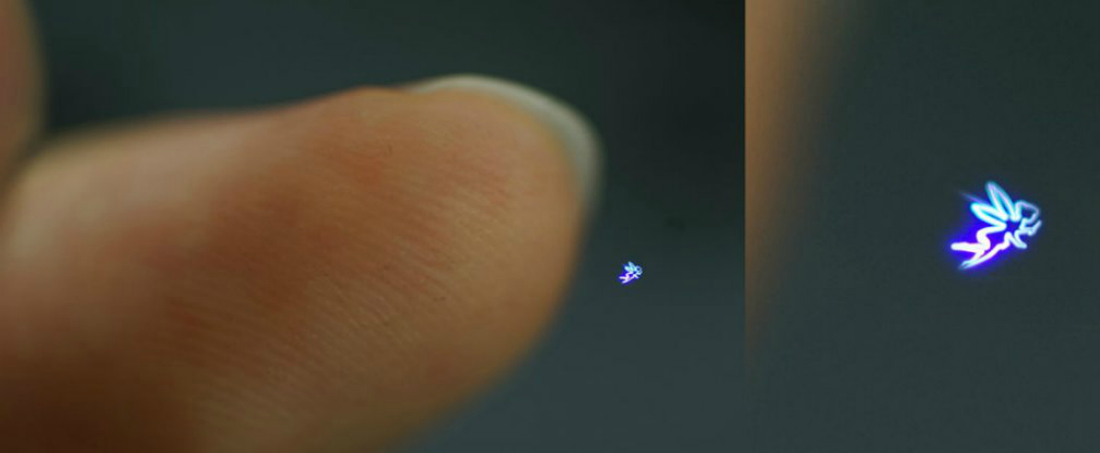
Virtual Touch
For anyone who grew up watching Star Trek, real life holograms are a dream come true. Who wouldn’t want to spend an afternoon roaming about on the holodeck exploring strange realms, or maybe having adventures with Captain Proton (or even Sherlock Holmes)?
Now, that day is a little bit closer, as scientists from the Utsonomiya University Center for Optical Research and Education have created holograms that can be manipulated via touch.
The three dimensional virtual projections are based on a system called ‘Fairy Lights,’ which uses femtosecond laser technology to fire high frequency laser pulses that last just one millions of one billionth of a second. If you aren’t aware, that’s a very tiny amount of time.
Ultimately, this allows the hologram’s pixels to be manipulated in mid-air and respond to human touch. Researchers behind the study demonstrate how ‘touchable holograms’ work in the video below:

Light Technology
Currently, light technology does not allow humans to interact and feel light as matter, but the findings that come thanks to this experiment can change this. Ultimately, the research lends itself to practical applications in entertainment, medicine, and architecture.
In an interview with Reuters, one of the leading researchers behind the experiment, Dr. Yoichi Ochiai of Tsubuka University, noted the wide variety of potential uses for this tech: “People’s daily lives would change if we use a bigger laser in a bigger space where people can interact with it, and to see how it can be used in situations where three dimensional communication is necessary such as a construction site or in the medical field.”
To that end, further studies into this technology could see larger lasers that can allow people to interact with the holograms. For instance, it may be possible to use a light beamed computer keyboard or enabling virtual touch for video chats.
There have been previous experiments that tried to achieve the same results, but laser beams used to generate them would burn human skin…which makes for a somewhat less than fun experience.
The team was able to avoid damaging participants’ skin by reducing the duration of the lasers’ bursts. They found that pulses between 50 milliseconds and 1 second were perfect. They resulted in optimized sense of touch and, well, not burning.